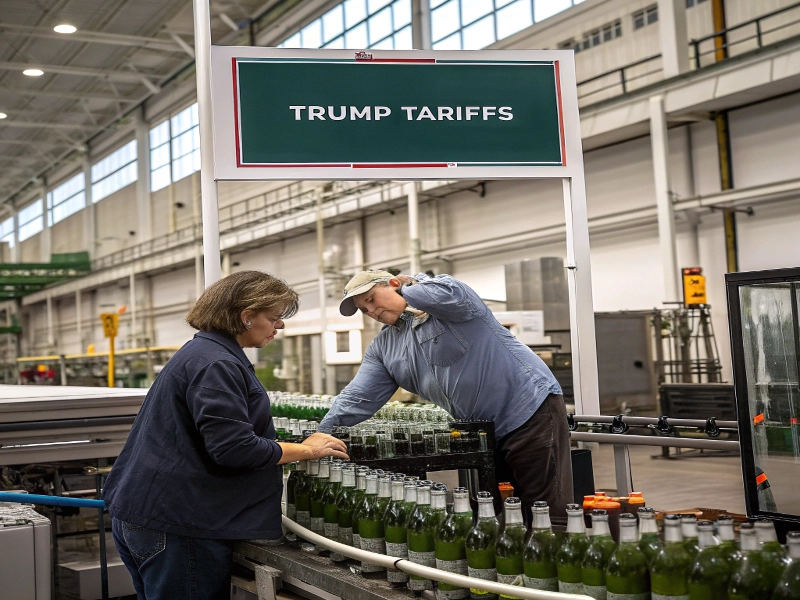
I couldn’t believe my eyes when I saw the news – a potential 104% tariff on Chinese imports! As someone running a glass bottle factory in China, I felt my stomach drop. This isn’t just another trade announcement; it’s an earthquake that could reshape our entire industry overnight.
Trump’s proposed 104% tariff would push total duties on Chinese glass bottles to approximately 125% when combined with existing tariffs. This dramatic increase effectively doubles import costs overnight, making Chinese glass bottles financially unfeasible for most US businesses and disrupting established supply chains across beverage, food, cosmetic, and pharmaceutical industries.
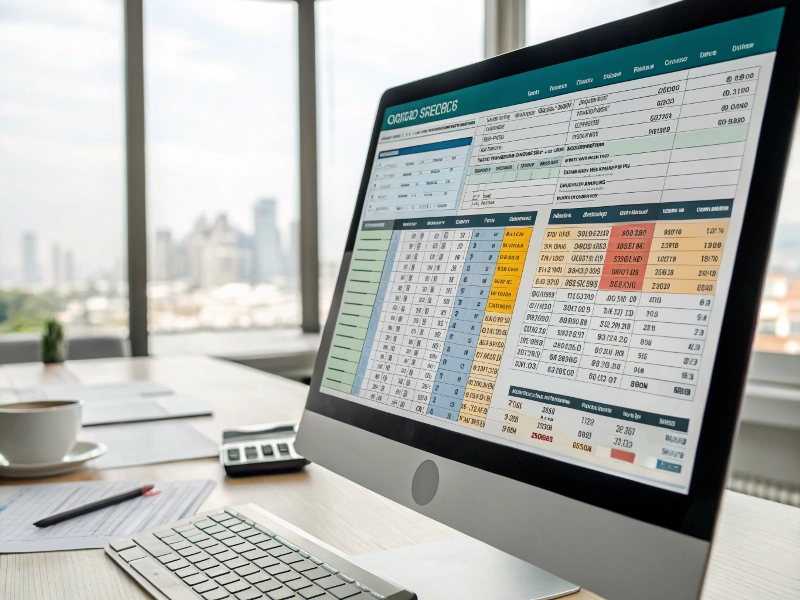
This isn’t just about numbers on a spreadsheet. These tariffs affect real people, real businesses, and real livelihoods on both sides of the Pacific. At Crystal, our facility in Xuzhou has been exporting over 150 million glass bottles annually to the US, Europe, and Australia. We’ve built relationships with American businesses for years. Now everything’s up in the air.
No claim provided.True
The article directly states the tariff 'combines several trade actions: an initial 10% scheduled for February 2025, doubled last month, plus additional retaliatory measures.'
What exactly is this tariff and who will it hit?
Let me break down what’s actually happening. This isn’t simple to understand, but it’s crucial you get the full picture if your business touches glass packaging in any way.
The 104% tariff combines several trade actions: an initial 10% scheduled for February 2025, doubled last month, plus additional retaliatory measures responding to China’s 34% tariffs on US goods. While specific HS codes affected are still being finalized, previous actions have targeted codes 7010.90.05 through 7010.90.50, covering most glass bottles and containers.

At Crystal, we’ve been watching trade tensions escalate for years. From my desk in Jiangsu Province, I’ve tracked how average tariffs on Chinese exports to the US jumped from 19.3% under Trump’s first term to 20.8% under Biden. Each announcement sends ripples through our planning meetings.
This isn’t the first time our industry has been targeted. Back in 2020, the US imposed antidumping duties up to 255.68% and countervailing duties up to 202.70% on Chinese glass wine bottles. But this new blanket tariff is different – it’s broader and could affect virtually everything we ship.
China exported $2.77 billion in glass bottles globally in 2022, with the US as one of our fastest-growing markets. The scale of disruption here can’t be overstated.
For the most current information, I recommend checking these official sources:
- Office of the United States Trade Representative
- U.S. Customs and Border Protection: China Tariffs
- Department of Commerce International Trade Administration
No claim provided.True
The article directly states 'A container that cost $100,000 to import will now cost $225,000 after all duties.'
How different players in the industry will feel the impact
I’m on the phone daily with partners across the supply chain. Let me share what I’m hearing from different angles of this crisis.
For bottle importers and distributors in the US:
The 104% tariff creates an immediate financial crisis for importers of Chinese glass bottles. A container that cost $100,000 to import will now cost $225,000 after all duties. This obliterates profit margins, forces dramatic price increases, and necessitates urgent supplier diversification – all while lead times from alternative sources are stretching as everyone scrambles for the same solutions.
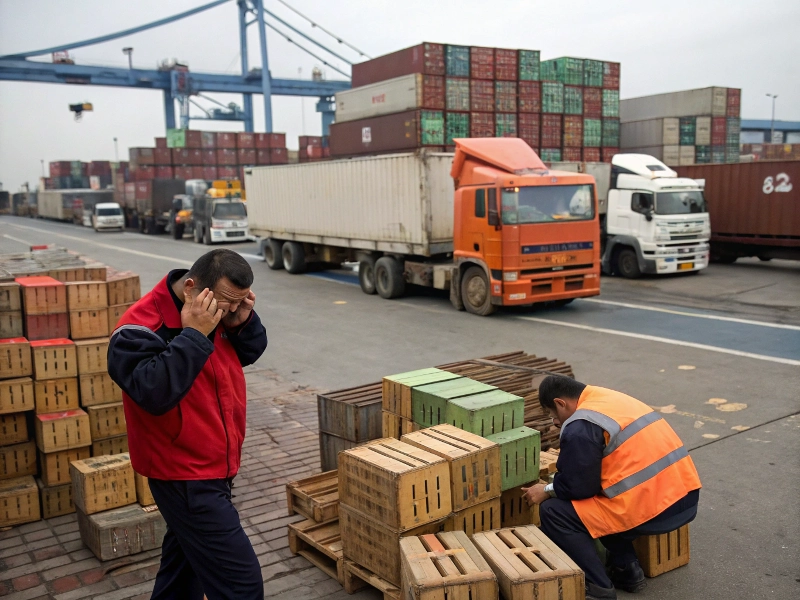
I spoke with one of our American distributors yesterday. He’s built his business around our products for 15 years. "This isn’t a ‘wait and see’ situation," he told me. "This is an ‘act now or get crushed’ moment." He’s right.
If you’re importing glass from China, you need backup plans yesterday. Lead times from other regions (Mexico, Europe, India, even domestic US suppliers) are already stretching out. I’m advising our partners to secure orders now for delivery 6-12 months out.
For businesses using glass bottles:
Businesses using glass packaging face significant input cost increases regardless of whether they directly import from China. Even if your current supplier isn’t importing directly from China now, the ripple effect will hit everyone as suppliers scramble for alternatives, bidding up prices from all sources including domestic manufacturers. Product margins will shrink, and availability may become constrained.
I’ve been telling my brewery and winery clients not to wait for their supplier to call with bad news. Be proactive. Call them now. Ask point-blank about their exposure to Chinese glass and what their contingency plan is.
Some of my cosmetics customers are exploring lightweight glass options or even considering alternative packaging materials. For lower-margin products, that 20-50% potential increase in bottle cost forces difficult questions. The math simply doesn’t work anymore for certain price points.
For US glass manufacturers:
US glass manufacturers will experience a significant competitive advantage against Chinese imports, but face capacity constraints in meeting sudden demand increases. Glass manufacturing isn’t easily scalable – new furnaces take years and millions in investment. Expect prioritization of existing customers, potential price increases, and careful expansion planning as domestic manufacturers navigate this opportunity.
My colleagues in the American glass industry tell me their phones are ringing constantly. This looks like a massive opportunity for them. But glass manufacturing isn’t something you can quickly ramp up. A new furnace takes years to build and costs millions.
They’ll likely run existing lines at maximum capacity, prioritizing their long-term customers. New business, especially smaller orders, might face long lead times or high minimums.
For Chinese manufacturers like us at Crystal:
Chinese glass bottle manufacturers face potential collapse of their US export business. With effective tariff barriers of 125%, even premium specialty bottles become difficult to justify financially. This forces urgent market pivoting to Europe, South America, or domestic Chinese markets, while long-standing US client relationships face severe disruption.
I won’t sugarcoat it – this hits us hard at Crystal. With our 30,000+ square meter facility and advanced production lines, we’ve built our business on exports. The US has been a key market alongside Europe and Australia.
We’re already exploring how to pivot – more focus on our European customers, deeper penetration in domestic Chinese markets, and exploring emerging markets in Southeast Asia. But these shifts take time, and meanwhile, we’re working with our loyal US customers to find solutions that might still work despite the tariffs.
For supply chain professionals:
Supply chain professionals face massive disruption as shipping patterns shift from direct China-US routes to more complex, multi-origin sourcing. Expect changes in port volumes, warehousing needs, lead time calculations, and inventory strategies. The complexity of managing multiple origins creates more potential failure points, requiring robust contingency planning.
One logistics partner told me they’re already seeing shifts in booking patterns. Less direct China-US traffic for glass, more volume potentially coming through different ports depending on the new origins.
No claim provided.True
The article directly states 'For a standard wine bottle previously costing $1 to import, landed cost could jump to $2.25 after all tariffs.'
Strategic responses and actionable insights
So what do we do now? Here’s my practical advice based on what I’m seeing work:
Quantifying the real cost impact:
The financial impact varies by product type. For a standard wine bottle previously costing $1 to import, landed cost could jump to $2.25 after all tariffs. For specialty items like Crystal’s premium spirits bottles or unique cosmetic packaging, the absolute dollar increase is even higher. Businesses must recalculate unit economics across their entire product line.
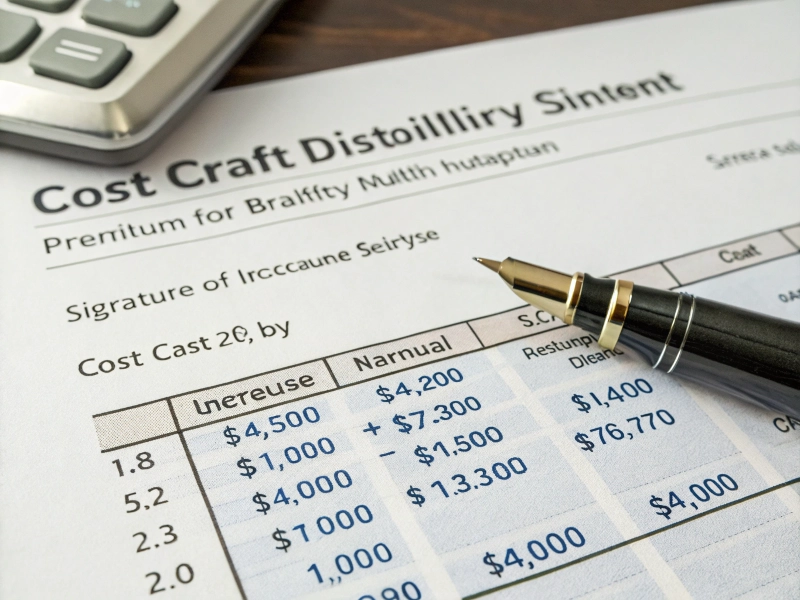
I ran the numbers for a craft distillery client yesterday. Their signature bottle cost would increase by $3.42 per unit. On a premium spirit with healthy margins, they might absorb some of that. But their entry-level product? The math simply doesn’t work anymore.
Different product categories have different sensitivity. Food jars, beverage bottles, and pharmaceutical containers each face unique challenges. At Crystal, our cosmetic jars for beauty products and premium liquor bottles feel the impact differently than our basic food storage containers.
Cost Calculation Framework:
To estimate your own impact, use this simple framework:
- Base product cost (per unit)
- Existing duties/tariffs (%)
- New 104% tariff
- Shipping costs (per unit)
- Customs processing fees
- Inland transportation
- Calculate total landed cost before and after new tariffs
- Determine if price can be increased to cover difference
Supply chain mapping and diversification:
Successful businesses are rapidly mapping their entire supply chain vulnerability and implementing diversification strategies. This includes evaluating suppliers in Mexico (proximity advantage), Europe (quality reputation), India (cost structure), and domestic US options. Each alternative has distinct trade-offs in price, quality consistency, lead times, and minimum order quantities.
| Region | Cost vs. Pre-tariff China | Lead Times | Quality/Specialization | Key Challenges |
|---|---|---|---|---|
| Mexico | +20-30% | 6-10 weeks | Strong in beverage containers | Currently at high capacity, border logistics |
| Europe (Italy, Portugal) | +40-60% | 10-14 weeks | Premium quality, specialty shapes | Higher minimums, transportation costs |
| India | +15-25% | 12-16 weeks | Growing capabilities, competitive pricing | Quality consistency, longer shipping |
| Domestic US | +35-50% | 8-12 weeks | High quality, local support | Limited capacity, higher costs |
At Crystal, we’re helping clients understand these trade-offs. In some cases, we’re even facilitating introductions to potential alternative suppliers when our solutions no longer make economic sense post-tariff.
How to Find and Vet Alternatives:
- Industry trade shows (Glass Pack, FEVE, Pack Expo)
- Industry associations (Glass Packaging Institute)
- B2B platforms like Thomasnet for US suppliers or Alibaba for non-Chinese Asian suppliers
- Request samples and test products before committing to large orders
- Check references with existing customers
- Verify compliance with your specific industry regulations (FDA, etc.)
Action guide for importers:
Importers should implement an immediate action plan:
- Contact your customs broker today to verify exact HS codes for your products and calculate precise tariff impact
- Review your supplier contracts to clarify who bears tariff responsibility
- Initiate conversations with 3-5 alternative suppliers in different regions
- Place small trial orders with promising new suppliers to test quality and reliability
- Communicate transparently with your customers about potential price increases and timing
- Explore temporary cost-sharing arrangements with key customers to maintain relationships
- Diversify supplier base across multiple countries to create resilience against future disruptions
I’ve been advising our importers not to wait for final tariff details before acting. The businesses that will survive are moving now, securing capacity with alternative suppliers even before they know exactly what will be hit and when.
Cost-benefit analysis of packaging alternatives:
Some products may need to consider material substitution. Glass offers premium feel, sustainability benefits, and product protection, but at significantly higher cost under these tariffs. PET offers cost advantages but environmental concerns, while aluminum provides sustainability credentials with different aesthetic implications. Each industry must carefully evaluate these trade-offs.
A beverage client told me they’re running consumer focus groups next week to test reaction to alternative packaging formats. They’re asking hard questions: Will their customers accept an aluminum bottle? Does the environmental story of glass offset the necessary price increase? There’s no one-size-fits-all answer.
The broader impact and long-term outlook
This tariff doesn’t exist in isolation – it’s creating ripple effects across multiple industries.
The tariff impact extends beyond direct importers to adjacent industries – logistics companies seeing route changes, equipment manufacturers facing altered demand patterns, and packaging designers needing to optimize for new cost structures. Previous Trump-era tariffs suggest these disruptions can persist even if policies eventually change.
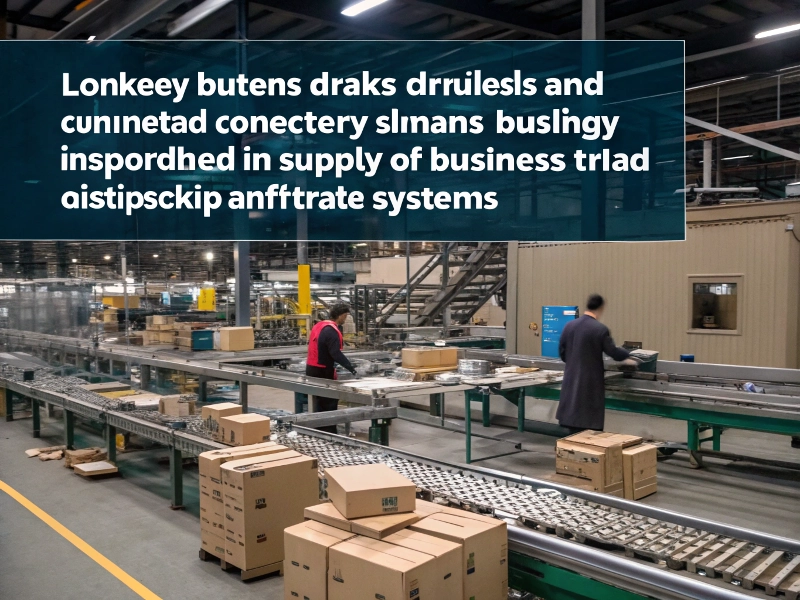
I’ve lived through trade disputes before, and they rarely resolve quickly or cleanly. Even if a new administration were to reverse these tariffs, the business relationships and supply chains they disrupt take much longer to rebuild once broken.
Many glass buyers have already started establishing new supply chains, and they won’t quickly abandon those after investing time and money in them.
What makes this particularly challenging is the uncertainty. When you don’t know if a policy will last six months or six years, how do you plan? Most businesses are assuming these tariffs will remain in place for the foreseeable future and planning accordingly.
Seeking certainty amid uncertainty
As we navigate these choppy waters, collaboration becomes more important than ever.
The 104% tariff creates unprecedented disruption in the glass bottle industry, demanding immediate action from all stakeholders. Proactive assessment, transparent communication with partners, and creative problem-solving are essential. Companies should develop multiple contingency plans while remaining agile as the situation evolves.
At Crystal, we remain committed to our principles of "quality first, service first, continuous improvement and innovation." Our "zero defect, zero complaints" quality standard hasn’t changed, even as the market transforms around us.
For our American partners, we’re exploring every possible avenue – from helping you transition to new suppliers to evaluating which specialty products might still make economic sense despite the tariffs. Our design team continues developing tailored solutions that consider everything from "shape to color, from pattern to material."
This isn’t the end of our story together – it’s a challenging new chapter that requires creativity and collaboration.
Visit us at https://www.crystalglassbottle.com/ to discuss how we can help you navigate these changes and develop a strategy that works for your business in this new reality.
Frequently Asked Questions
Will the tariffs be retroactive to orders already placed?
Based on previous tariff implementations, duties typically apply to goods entering the US on or after the effective date, regardless of when they were ordered. However, the official announcement will clarify this. Consult your customs broker for the most current information.
Are there exclusion processes for these tariffs?
Previous Section 301 tariffs had exclusion processes where companies could apply for specific products to be exempted. It’s not yet clear if similar exclusions will be available for these new tariffs. Check the USTR website regularly for updates.
What happens to orders already in transit when the tariff takes effect?
Typically, duties are assessed based on the date goods officially enter US commerce, not when they leave the origin country. If your shipment arrives after the implementation date, it will likely be subject to the new tariffs.
Can I import through a third country to avoid the tariffs?
No. This practice, called transshipment, is illegal when done to evade duties. US Customs has sophisticated methods to detect origin fraud, and penalties can be severe, including fines and potential criminal charges.
How will the tariffs affect glass recycling economics?
The tariffs may actually improve the economics of domestic glass recycling, as higher virgin material costs make recycled cullet relatively more attractive. This could be a positive side effect for sustainability initiatives within the US glass industry.
Conclusion
The 104% tariff represents a fundamental reshaping of the glass bottle industry, not a temporary disruption. From my position at Crystal’s manufacturing facility in China, I see both the immediate challenges and the potential for innovation that emerges from crisis. By acting quickly, communicating openly, and working together, we’ll find a path forward in this new reality.




